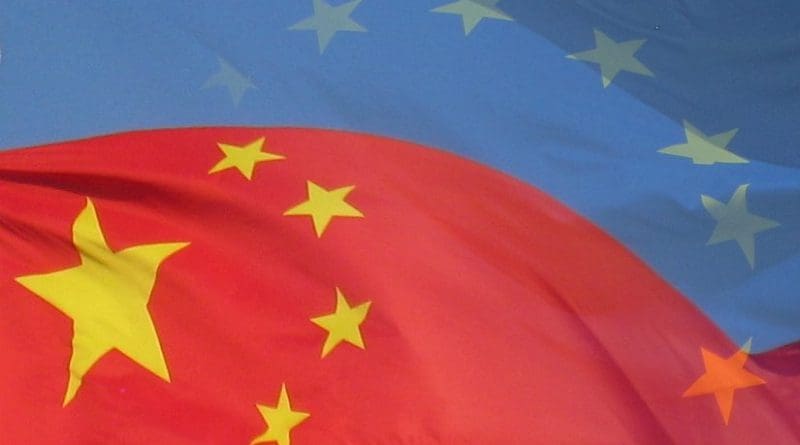US ‘Foes’ EU And China Have Chance To Lead The Way On Climate Change
By Arab News
By Andrew Hammond*
Beijing this week hosted the 20th annual China-EU political and business summit. This landmark event provided a timely, important opportunity for the two powers to develop a more unified front on a range of issues over which they are in dispute with the Donald Trump team, from trade to climate change, after the US president called them both key “foes” on Sunday.
European Council President Donald Tusk noted that Monday’s event coincided with the Trump-Vladimir Putin summit in Helsinki, asserting that “we are all aware of the fact that the architecture of the world is changing before our very eyes.” He urged commitment to a “rules-based order” to prevent “conflict and chaos” and potentially even “hot wars.”
The meeting, held in the framework of the jointly agreed 2020 strategic agenda for cooperation, saw Premier Li Keqiang lead the Chinese delegation meeting with Tusk and European Commission President Jean-Claude Juncker. One of the key prizes under discussion was a potential EU-China Comprehensive Agreement on Investment, and progress was made toward realizing this goal in the coming years.
Given the growing concerns about trade wars, international trade was a key discussion area, with both Beijing and Brussels now engaged in disruptive spats with Washington. Despite EU-China disagreements over issues like subsidies and market access, a unified front was shown in support of the multilateral system, with the World Trade Organization at its core.
Amongst the other key items on the table were mobility and migration, broader foreign policy cooperation, and an ongoing human rights dialogue. It was global warming, however, where a particularly fruitful bilateral dialogue was held, including the signing of a new emissions trading and clean energy agreement, reinforcing the two powers’ commitment to developing a cost-effective low-carbon economy under the Paris climate deal.
A key reason why this could be so important is that, collectively, the EU and China account for around one-third of global greenhouse gas emissions (which grows to half when the US is added into the picture). Strong, bold climate leadership by Beijing and Brussels is therefore especially important to preserve the integrity of the Paris accord following Trump’s decision to pull the US out of it.
The overriding reason why EU-China discussions on climate change are generally so cooperative is that, fundamentally, both share a vision of a prosperous, energy-secure future in a stable climate. The 2015 climate declaration between Beijing and Brussels, for instance, agreed to intensify cooperation in domestic mitigation policies, carbon markets, low-carbon cities, greenhouse gas emissions from the aviation and maritime industries, and hydrofluorocarbons.
With appropriate vision, both sets of leaders recognize that there is a massive “win-win” opportunity on the horizon from accelerating the transition to a low-carbon future. And this collaboration looks set to only deepen, including on emissions trading, with Beijing’s plans to establish a nationwide emissions trading system.
The scale of China’s planned investment in the green economy is staggering; a fact that the EU is increasingly recognizing. And this is buttressed by Beijing’s policy commitments on the climate, clean air and energy agendas.
In recent five-year plans, a strategic direction has been set to change the country’s development model from low-grade, labor-intensive manufacturing toward a greater emphasis on services and innovation. Another signal of the seriousness of Beijing’s climate ambitions is the fact that it is using the experience of its subnational pilot trading schemes to inform development of its future national model.
Here, China is proving open to learning from Europe’s extensive experience. Brussels has clear strengths in this area that Beijing (now the world’s largest emitter of greenhouse gases) could harness. As the latter continues on a trajectory to potentially become the world’s largest economy, there are thus substantial commercial opportunities for EU-based science and technology firms, which are leaders on much of this clean technology agenda.
Yet this collaboration will not just be one-way traffic. Indeed, China is already the world’s largest manufacturer and user of solar panels and the largest investor in renewable energy, and it is increasingly possible that technology transfer will be a two-way process.
To be clear, there is still a way to go before China has a fully-fledged carbon market, and both parties have yet to develop new low-carbon standards in key industrial sectors. However, the direction of travel is clear: Cooperation could build low-carbon industries in a range of sectors, and also align Europe more closely to what could one day be the world’s largest economy.
Taken overall, both EU and Chinese leaders are increasingly recognizing that they potentially have much to gain from a deeper partnership, not least on the climate agenda. Now is thus the time for both parties to intensify cooperation to bolster growth, and define the landscape of the 21st century clean energy economy, while Trump’s US sits on the sidelines.
*Andrew Hammond is an Associate at LSE IDEAS at the London School of Economics

